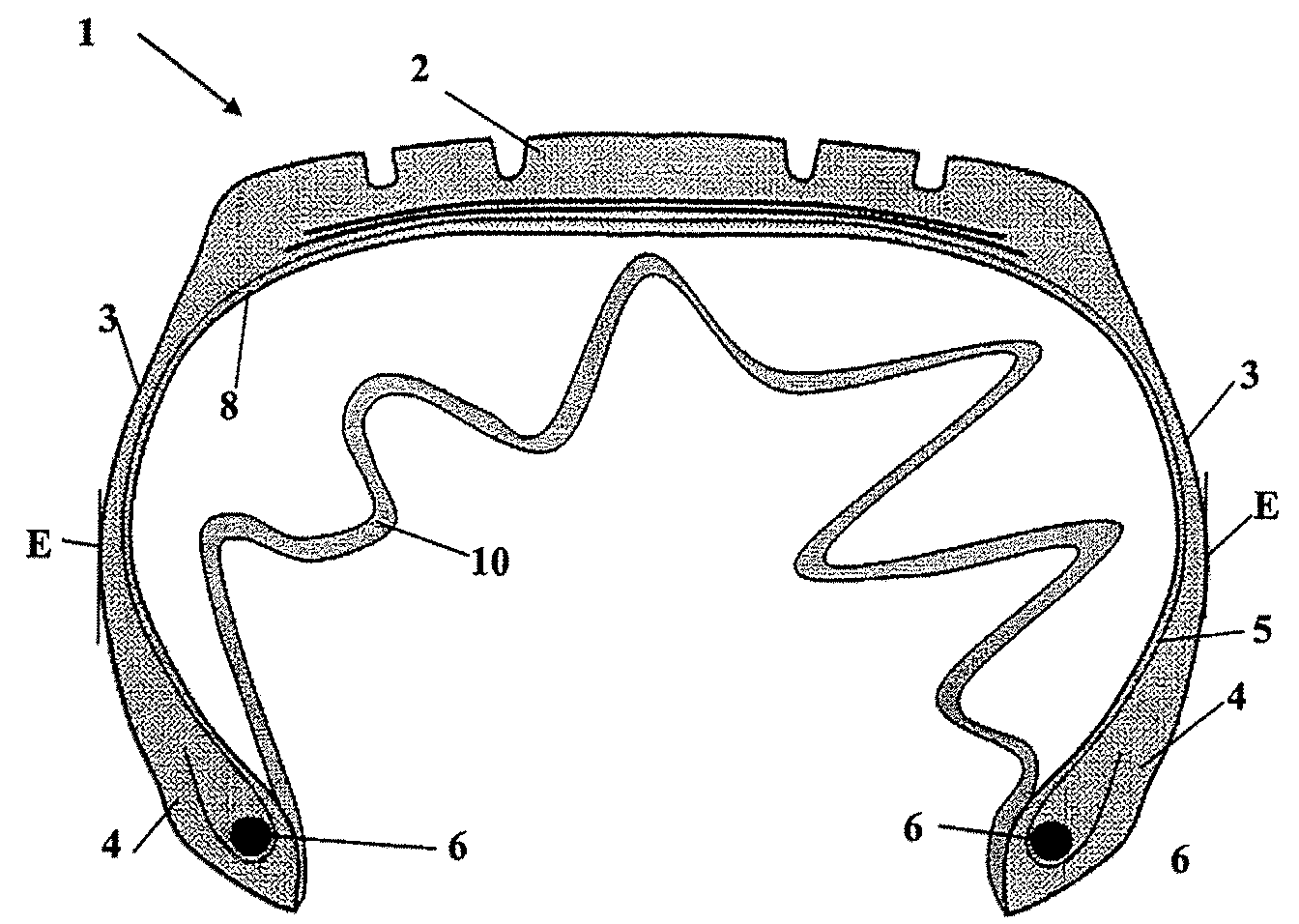Tire with a cellular layer
a technology of cellular layer and tire, applied in the field of tires, can solve the problems of polluting the environment of the vehicle, complex preceding system, high cost, etc., and achieve the effect of reducing noise, improving noise reduction, and less cavity geometry
- Summary
- Abstract
- Description
- Claims
- Application Information
AI Technical Summary
Benefits of technology
Problems solved by technology
Method used
Image
Examples
Embodiment Construction
[0047]In what follows, the expression “axial cross section” of a tire is understood to mean any cross section that passes through the axis of rotation of the tire; and the expressions “transverse cross section” and “longitudinal cross section” are understood to mean any cross section perpendicular to the axis of rotation of the tire.
[0048]FIG. 1 presents a typical spectrum of noise amplitude as a function of frequency measured in a passenger vehicle travelling at 80 km / h. Two peaks, linked to a first cavity mode around 230 Hz (arrow A), are particularly noted. These two peaks are very audible and are a great nuisance from the point of view of comfort for the driver or a passenger of the vehicle.
[0049]FIG. 2 presents a tire 1 according to an embodiment of the invention seen in axial cross section. The tire includes a tire structure formed of at least a crown 2 and two sidewalls 3 extended by two beads 4. A carcass-type reinforcing structure 5 is anchored into the two beads 4 around b...
PUM
| Property | Measurement | Unit |
|---|---|---|
| thickness | aaaaa | aaaaa |
| thickness | aaaaa | aaaaa |
| thickness | aaaaa | aaaaa |
Abstract
Description
Claims
Application Information
 Login to View More
Login to View More - R&D
- Intellectual Property
- Life Sciences
- Materials
- Tech Scout
- Unparalleled Data Quality
- Higher Quality Content
- 60% Fewer Hallucinations
Browse by: Latest US Patents, China's latest patents, Technical Efficacy Thesaurus, Application Domain, Technology Topic, Popular Technical Reports.
© 2025 PatSnap. All rights reserved.Legal|Privacy policy|Modern Slavery Act Transparency Statement|Sitemap|About US| Contact US: help@patsnap.com



